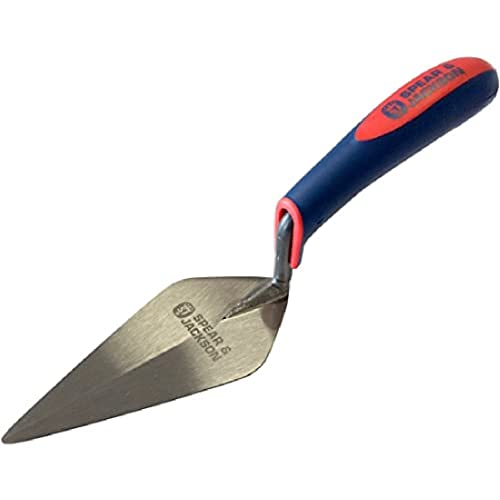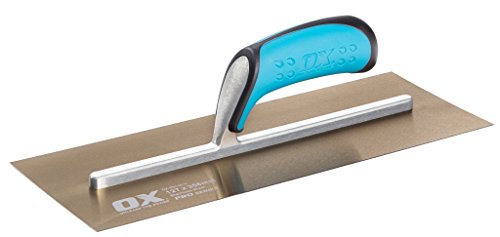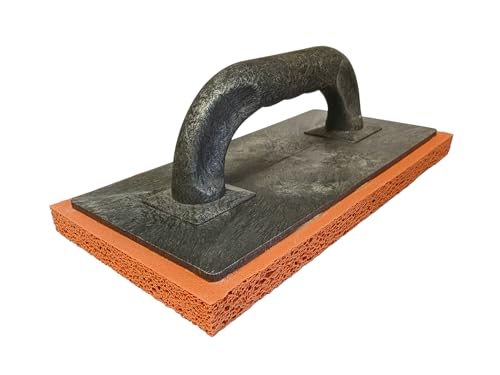Want to know how to do garden wall repairs? Pros reveal how to fix cracked mortar, crumbling render or damaged brick
Learn how to perform garden wall repairs yourself to save money

If your garden wall is looking worse for wear, you can restore it to its best with smart, cost-effective DIY garden wall repairs. You can get rid of or replace old mortar, render or brick with a fresh new batch that will not only make it look good, but repel the elements and keep it in good condition for years to come.
It’s not as difficult as you might think; you’ll need a few basic tools to remove the old and introduce the new. Knowing how to render a garden wall will make it look like new, replacing mortar will keep out water and replacing bricks will strengthen a wall.
Here you’ll find expert advice on what tools you’ll need and tips on how to make those much-needed repairs.
Reasons a garden wall needs repairing
If your front garden wall ideas are suffering cosmetic damage, it's typically mortar and render issues, as Thomas Oldham, co-founder of UK Construction Blog, shares, “Cracked mortar or crumbling render is also fairly common.” He adds, “This can happen simply with age, or from frost damage in winter.”
As soon as mortar starts to wear away, other problems can occur, continues Oldham, “Mortar tends to wear away after years of weather exposure, and once it starts to go, water can get in and make things worse.”
Farook Member, Director, and Home Design Expert at QS Supplies, adds, “Early treatment of these issues avoids further damage and extends the life of the wall.”
More serious structural issues include bowing, leaning and sinking. Member points out the reasons behind bowing: “It occurs as a result of there being pressure building up behind the wall, most frequently caused by water retention or encroaching tree roots.” He adds, “Poor drainage and varying temperatures over time lead to bulging of the wall.”
Bring your dream home to life with expert advice, how to guides and design inspiration. Sign up for our newsletter and get two free tickets to a Homebuilding & Renovating Show near you.
One of the most common issues is sinking, which generally means there are problems with the foundations, as Oldham shares, “Sinking, especially with older walls, is where the base has eroded or was never properly compacted in the first place.”

Thomas Oldham has spent the past four years using his expertise of working in the engineering and construction industry for over a decade to develop the UK Construction Blog - a leading online platform dedicated to empowering individuals and businesses in the construction industry.
Tools you’ll need to repair a garden wall
What you need will depend on what is being repaired, but Member suggests, “A set of trowels is handy for spreading render finishes and mortar, and a pointing trowel enables you to obtain tight, neat joints when repointing brickwork.” He adds, “A spirit level ensures your wall remains straight and plumb”
Member also recommends a few products for mortar and render, “A quality ready-mixed product, such as Blue Circle Quality Assured Mortar (available from B&Q), is ideal to mix and spread mortar.”
He adds, “To save your repaired wall from experiencing moisture damage in the future, you can treat it using a masonry sealer such as Thompson’s WaterSeal (available from Amazon), once it has hardened.”

Farook Member is the Director of QS Supplies and a seasoned expert in the home improvement and bathroom industry. With over three decades of experience, Farook has been at the forefront of innovation and quality since founding QS Supplies in 1990.
Try these to help repair a garden wall
How to repair a garden wall
Before starting any repair work, you need to assess the damage. Oldham says, “Start by checking the wall carefully. Anything that’s leaning or has large cracks might not be safe to work on without help from a professional.” If this is the case, get quotes from local builders.
If the wall is stable enough to work on, it's time to get started. To remove loose mortar, broken bricks and failing render, Oldham says, “Use a bolster chisel (like this Magnusson 44mm Masonry Bolster from B&Q), and hammer to knock away the damaged bits, and then clean the area with a stiff brush.” Use a wire brush (like this Forney Wire Scratch Brush from Amazon), if needed. Oldham adds, “It helps to dampen the surface before applying new mortar so that it sticks properly.” An alternative for removing mortar is to use an angle grinder (like this Makita Angle Grinder from Amazon) and a suitable mortar rake (like this Superior Diamond Mortar Rake Disc from Amazon).
Repointing brick
If repointing brickwork, you need the right mortar mix, Oldham says, “A mix of four parts sand to one part cement gives a firm consistency for garden walls.” Mix the mortar to the right consistency and use a pointing trowel to apply.
He adds, “Press the mortar firmly into the joints and then shape it with a pointing tool for a neat finish. Depending on the weather, it’ll usually need 24 to 48 hours to set.
Replacing a brick
If replacing a brick, there is a little more work involved. Oldham outlines the process: “You’ll need to knock out the damaged one, clean out the gap, and spread fresh mortar on all sides of the new brick.”
To finish, he adds, “Tap it into place and check its level as you go. Once it’s in, wipe away any extra mortar before it sets.” You can use a stiff brush for a basic finish or a pointing trowel for a more refined mortar shape.
Repairing render
If the render is damaged, the first step is to get rid of the loose mortar. Oldham says, “Apply a bonding agent (like this Sika SikaBond SBR+ Waterproof General Purpose Bonding Agent from Amazon) to help the new layer stick. It’s best to build it up in two stages - a rough first coat followed by a smoother top layer. Each layer needs time to dry properly before moving on to the next.”
Try to avoid repair work when it's freezing or very hot, as this will affect the end result, giving a weak finish.
FAQs
Can I repair a garden wall myself?
Basic repairs are definitely within the capabilities of most DIYers, “Especially works like repointing, rendering, or replacing a few loose bricks,” say Member.
But you will need to make sure that you have the right tools to do the job, as it will prove very difficult to get right if you don't, I can promise you.
Members says, “You’ll need patience” He adds, “Repairs can be done safely provided that one plans well and is detail oriented.”
For more extreme damage, such as sinking, bowing or leaning, you will need to call upon the services of a professional.
How much will trades charge to repair a garden wall?
This will depend very much on the extent of the damage, the size of the wall and the type of repair needed. A general builder/labourer will charge around £200 a day for labour, while material costs will need to be added on top.
As a general guideline, expect to pay £400-£500+ for a smaller straightforward job such as repointing, brick replacement and rendering. For larger jobs, where a wall needs to be rebuilt or foundations re-established, you should expect to pay a minimum of £750-£1000. Get at least two quotes to get a better idea of what you should expect to pay.
When repairing a garden wall, it is a good time to consider other elements in your garden that might need an upgrade or makeover. For insight and inspiration, check out our garden fence ideas, gravel garden ideas, and garden office ideas.
Steve Jenkins is a freelance content creator with over two decades of experience working in digital and print and was previously the DIY content editor for Homebuilding & Renovating.
He is a keen DIYer with over 20 years of experience in transforming and renovating the many homes he has lived in. He specialises in painting and decorating, but has a wide range of skills gleaned from working in the building trade for around 10 years and spending time at night school learning how to plaster and plumb.
He has fitted kitchens, tiled bathrooms and kitchens, laid many floors, built partition walls, plastered walls, plumbed in bathrooms, worked on loft conversions and much more. And when he's not sure how to tackle a DIY project he has a wide network of friends – including plumbers, gas engineers, tilers, carpenters, painters and decorators, electricians and builders – in the trade to call upon.




